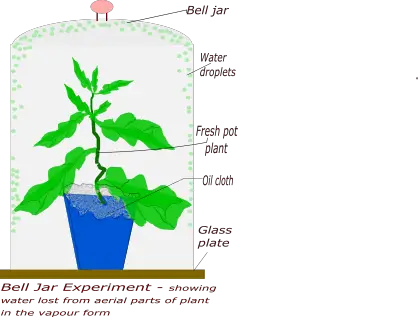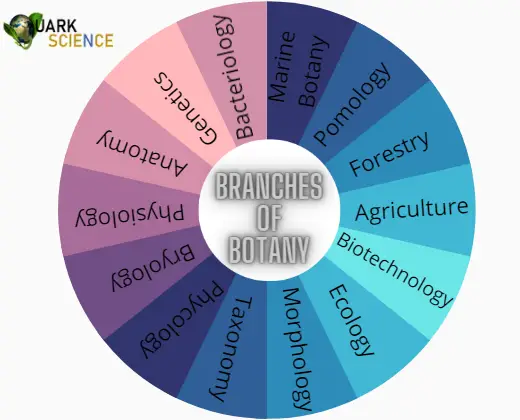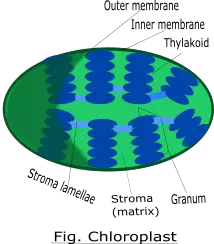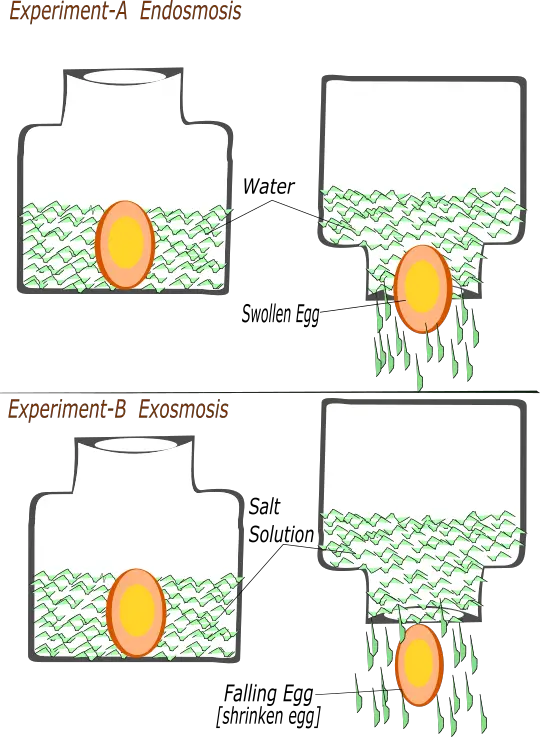Transpiration is defined as the loss of excess water from aerial parts of plant in the form of water vapour. Transpiration in plant removes excess water absorbed by roots. Aerial parts of plant includes plant parts which are exposed in air or above the soil surface like leaves, bark, stomata, flowers, fruits etc. There are many factors which either induce or reduce transpiration. And these factors are external and internal factors.

External factors affecting transpiration
External factors include environmental factors that affect transpiration. It includes:
Light: It is the most imporatant factor for causing transpiration in plants. It also plays important role in opening and closing of stomata from where majority of water is lost called as stomatal transpiration. During day time, stomata are opened and in night they are closed. So, rate of transpiration is high in day time(high intensity light) and low during night time.
Temperature: Rate of transpiration increases on increasing temperature. Stomata remains open in high temperature even in night. Humidity from the environment decreases as temperature increases. When humidity decreases, environment and its atmosphere becomes dry resulting in increase in transpiration.
Wind: Saturated air from plant surface area decreases on gentle wind and increases transpiration. But in storm and high velocity wind, rate of transpiration is nil due to closining of stomata.
Humidity: It is the presence of moisture in air. If the environment moisture is low plants loses more water vapour for it’s internal maintance & cooling and vice versa. That’s why high humidity decreases while low humidity increases transpiration.
Soil condition: Soil, air, water and temperature directly influence the rate of absorption of soil water by roots. Thus, soil condition effect the rate of transpiration because it depends upon absorption.
Internal factors affecting transpiration
Internal factors include plant factors like:
Transpiration Area: The plant with large transpiring area shows more transpiration than the plant with less transpiring area. Large transpiring area means larger nos. of exposed area in a plant from where water gets lost in the form of vapour. So, a big tree shows more transpiration then small tree of same species
Thickness of Cuticle: Cuticle performs cuticular transpiration. It is the outermost covering of plant parts and tissues. A plant with thick covering cuticle resists more water from vapourising than plant with thin covering cuticle. Higher the thickness of cuticle lower the transpiration and thinner the cuticle higher the transpiration.
Sunken Stomata: It reduces transpiration because sunken stomata have no direct contact with the environment.
Number of Stomata: As discuss earlier, stomata are main site for respiration. Transpiration increases on increasing number of stomata. Stomata are found mostly in green parts of plants like leaves, young stem, fruits etc. In leaf, transpiration is higher in lower surface than upper surface due to the presence of higher nos. of stomata in lower surface of leaf than on upper surface.
Also, old leaf performs low transpiration than young leaf. Activities of stomata decreases gradually as leaf gets older and older.
Root/Shoot Ratio: A high root/shoot ratio increases while low root/shoot ratio decreases rate of transpiration.
Transpiration in hydrophytes
Hydrophytes are plants growing fully or partially submerged in water such as hydrilla, water lilly etc. They show least or even no transpirataion. External factors like light, wind, humidity, temperature shows no effect for transpiration as these plants are submerged inside water. Internal factors shows least or no transpiration. Stomata are absent in fully submerged plant while in floating plants, it is small, permanently open, and present only on upper surface for trapping sunlight. Transpiration if occurs, it occur only in floating plant parts which are exposed in air.
Transpiration in xerophytes
Xerophytes are plant growing in desert such as cactus, euphorbia etc. They shows higher transpiration but may lower than mesophytes. Though these plants grows in hot and water scarcity environment, it has special adaptations that protect them from high transpiration rate and wilting. It has sunken stomata which prevents from major stomatal transpiration. It’s cuticle is thick which prevent stored water from vapourising. It has also less surface area as compared to terrestrial land plants.
Significance of Transpiration
Transpiration plays significant roles in plant life. The important significance includes:
- Out of total water absorbed by plant’s root, only 1% of water is used by plants. Remaining excess quantity of water is removed as vapour by the process of transpiration.
- It lowers the temperature of leaf as well as whole plant by evaporating water.
- It helps in ascent of sap by creating suction force on the leaf surface.
- With the increase of transpiration, rate of absorption of water and minerals increases fulfilling the demand of water and minerals inside cells.
- It removes excess water content making concentrated sugars and reserve materials.
- It enhance extensive development of root system that supplies water and minerals to heavy shoot growth.
- Disadvantages of transpiration
- High rate of transpiration causes wilting in plant. When rate of transpiration is higher than rate of absorption, wilting occurs leading to death in plants during hot and summer days.
- High rate of transpiration reduces photosynthetic yield which in turn reduces growth and production in plants.
- A huge amount of water is lost by this process.



